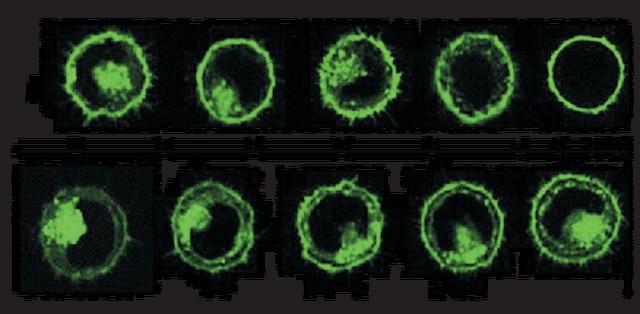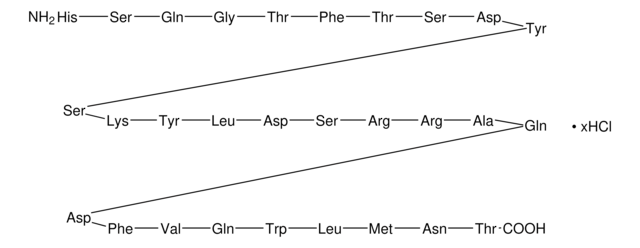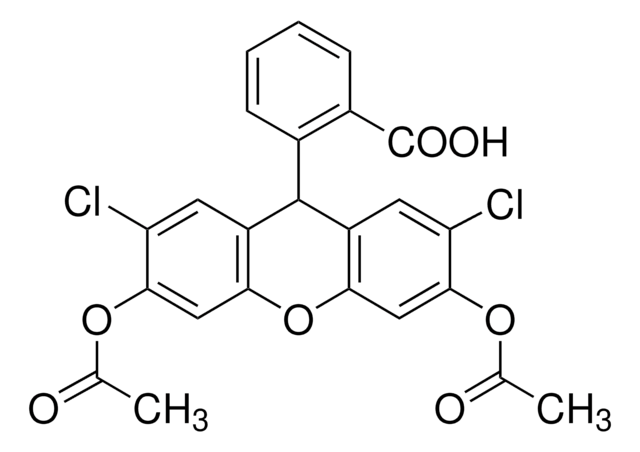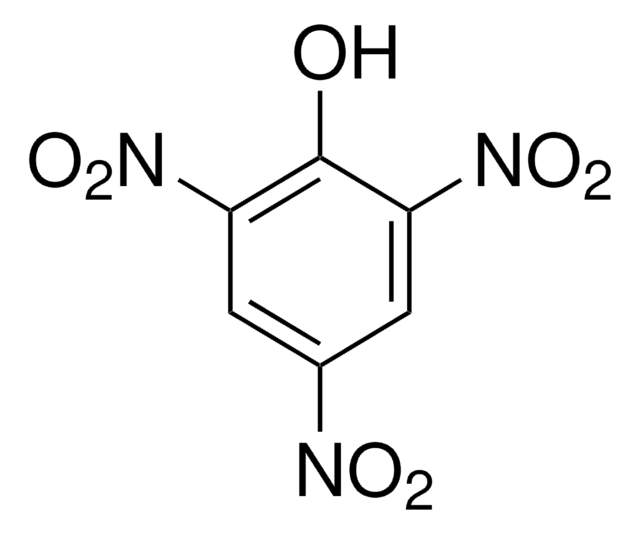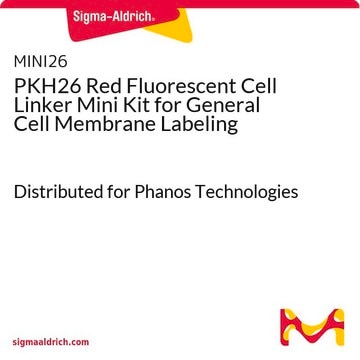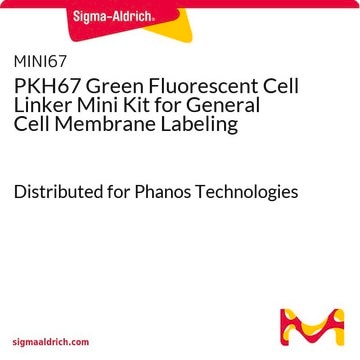D4292
3,3′-Dioctadecyloxacarbocyanine perchlorate
≥98% purity (TLC), powder
Synonym(s):
DiOC18(3), ‘DiO’
About This Item
Recommended Products
product name
3,3′-Dioctadecyloxacarbocyanine perchlorate,
assay
≥98% (TLC)
Quality Level
form
powder
color
orange
solubility
chloroform: 50 mg/mL
fluorescence
λex 484 nm; λem 501 nm in methanol
application(s)
diagnostic assay manufacturing
hematology
histology
storage temp.
2-8°C
SMILES string
[O-]Cl(=O)(=O)=O.CCCCCCCCCCCCCCCCCCN1C(\Oc2ccccc12)=C/C=C/c3oc4ccccc4[n+]3CCCCCCCCCCCCCCCCCC
InChI
1S/C53H85N2O2.ClHO4/c1-3-5-7-9-11-13-15-17-19-21-23-25-27-29-31-37-46-54-48-40-33-35-42-50(48)56-52(54)44-39-45-53-55(49-41-34-36-43-51(49)57-53)47-38-32-30-28-26-24-22-20-18-16-14-12-10-8-6-4-2;2-1(3,4)5/h33-36,39-45H,3-32,37-38,46-47H2,1-2H3;(H,2,3,4,5)/q+1;/p-1
InChI key
GFZPJHFJZGRWMQ-UHFFFAOYSA-M
Looking for similar products? Visit Product Comparison Guide
Related Categories
Application
Biochem/physiol Actions
signalword
Warning
hcodes
Hazard Classifications
Eye Irrit. 2 - Skin Irrit. 2 - STOT SE 3
target_organs
Respiratory system
wgk_germany
WGK 3
flash_point_f
Not applicable
flash_point_c
Not applicable
ppe
dust mask type N95 (US), Eyeshields, Gloves
Certificates of Analysis (COA)
Search for Certificates of Analysis (COA) by entering the products Lot/Batch Number. Lot and Batch Numbers can be found on a product’s label following the words ‘Lot’ or ‘Batch’.
Already Own This Product?
Find documentation for the products that you have recently purchased in the Document Library.
Customers Also Viewed
Articles
Nitric oxide (NO) as a signal transporter in neurons, endothelial cells and in the immune system.
Our team of scientists has experience in all areas of research including Life Science, Material Science, Chemical Synthesis, Chromatography, Analytical and many others.
Contact Technical Service


